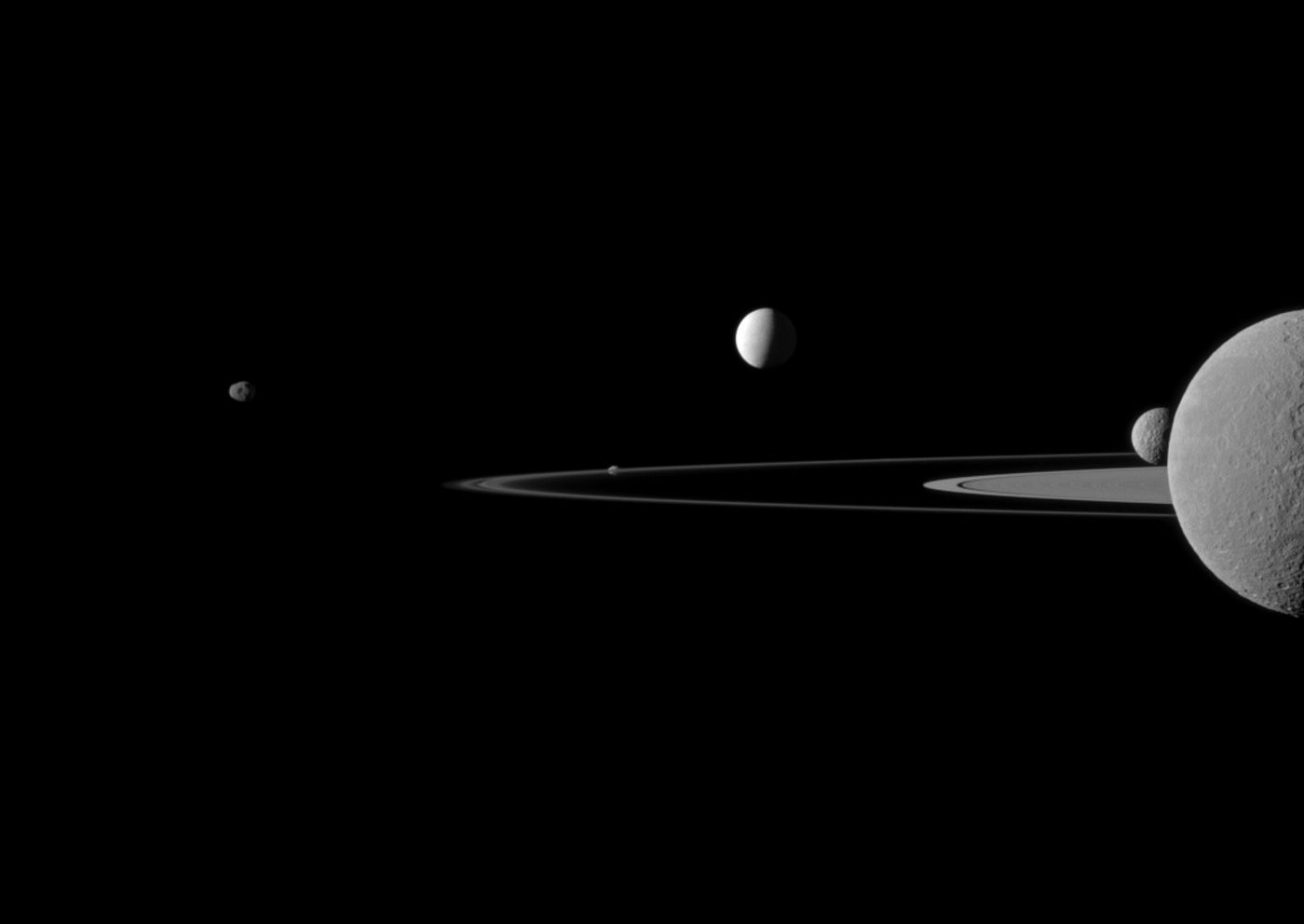Saturn's Moons May Be Younger Than Originally Thought
The Saturnian system is very busy in terms of moons; Saturn has at least 62 confirmed moons, but only some of those are large enough to really pay any significant attention to.
Image Credit: NASA/Cassini
Now, scientists are saying that many of Saturn’s moons are probably a lot younger than originally thought, which would suggest that the theory they came from the planet’s large and lustrous rings rather than other means would be more scientifically viable. The findings appear in the journal Icarus.
While it was originally thought that the moons were probably formed more than 4.5 billion years ago from objects making their way into the Saturnian system themselves, their movement can reportedly say a lot about them.
Scientists took some time to record Saturn’s Love number, a measurement of the rigidity of the planet, and found that Saturn’s moons actually move away from the planet much more quickly than expected. According to the research, the Love number and dissipation factor are instrumental in calculating the speed at which the moons move away from the planet.
At the center of what appears to be a gassy planet, Saturn has a rocky core that is around 18 times the mass of the Earth. This rocky core is said to tidally bulge along with the movement of the large moons that orbit it, and this bulge consequently pushes these moons further away.
“Those two parameters – the Love number and dissipation factor – are difficult to separate,” said Radwan Tajeddine a Cornell research associate in astronomy.
To better understand how these forces impact the objects that orbit Saturn, the researchers studied four smaller moons of Saturn. Because they’re smaller, the tidal impacts of Saturn would have a much more distinct effect on them than they would on larger moons.
“By monitoring these disturbances, we managed to obtain the first measurement of Saturn’s Love number and distinguish it from the planet’s dissipation factor,” Tajeddine said. “The moons are migrating away much faster than expected.”
Their findings revealed that not only are the moons moving faster away from the planet than originally thought, but also that the moons must be younger than 4.5 billion years. If they had actually been older than 4.5 billion years like originally thought, then the moons would have been much further away from Saturn by now as dictated by our understanding of how this ‘moon-moving-away-from-planet’ thing works.
As a bonus, the team found that a particular moon, Rhea, is actually moving away from Saturn 10 times faster than any other moons, making it a real oddball. At this point in time, no explanation has been theorized for why this might be occurring, but something may have disrupted it.
Much of the data that has been obtained about Saturn and its moons comes from the Cassini spacecraft, which is a joint effort between NASA and the ESA to learn more about the Saturnian system. The spacecraft is set to perform a suicide mission in September of 2017, but the data and photographs we’ve collected over the last 13 years have been incredibly valuable.
It should be interesting to see what else we can learn about Saturn before that time comes.
Source: Cornell University









